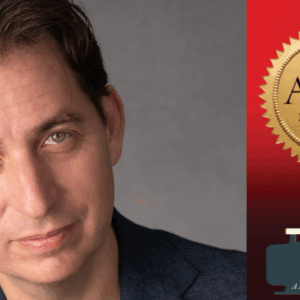
Reading Jill Ciment’s Consent As a Former Teenage Bride
Rafia Zakaria Considers Context, Choices and Consequences Across Eras and Cultures
“A memoir is closer to historical fiction than it is to biography” writes artist and author Jill Ciment in her retrospective memoir Consent. At seventeen, Ciment had an affair with her forty-seven-year-old painting teacher. The two married, and Ciment wrote the original account of the affair in a memoir titled Half A Life at forty-seven when the two had been together for twenty-seven years. Now, after his death and another twenty years, she reconsiders. How “free” were her choices at seventeen, what salubrious connotations of pedophilic intentions did she deliberately erase, and ultimately what is the relationship between truth and memory.
I was also married at seventeen, engaged at sixteen. This, however, was no culmination of a passionate May-December love affair. I was a young girl living in Karachi, Pakistan and this was an arranged marriage. I had spent a total of an hour or two with my husband to be prior to being bound in matrimony. But while the circumstances and the dates were remarkably different, (Ciment married in 1970, long before I was born), I was galvanized by a similar intention. I wanted very much to present the marriage and my situation as a choice I had made freely. “I know what I’m doing.” Ciment tells her mother when she is packing a duffel bag and leaving to move in with her forty-seven year old beau. My own words were only a slight variation, sixteen years old and seated on my bed next to my mother when she asked me if I wanted to accept the proposal from a nearly thirty-year old man, I said firmly, “Yes… I want to do it.”
I wanted the guests to see that I had chosen this. I was not some hectored maiden but entirely in control of my destiny.
Context lingers large over choices. As Ciment recounts evocatively, her affair took place at the apogee of the sexual revolution, when sexual mores had been loosened and AIDS had not yet appeared on the scene. In the initial memoir Half A Life, she presents herself as the seductress—having tried and failed at making it as an artist in New York City, she returns to Los Angeles and walks into the middle-aged painter’s studio and initiates their sexual encounter. Consent and context are intermingled—any Lolita-esque cadences are carefully absent.
In my world, context itself was changeable. In the world in which I consented and in which the marriage took place, a world of long-standing family ties, of generational bonds between families and of marriages that united lineage and wealth, an arranged marriage was par for the course. On the evening of the wedding reception, like all brides and grooms we were seated on a raised dais for the hundreds of guests to see. Unlike most brides who are quiet and shy, I was exuberant, and chatty—this is my natural personality, but I significantly pushed the wattage up. I wanted the guests to see that I had chosen this. I was not some hectored maiden but entirely in control of my destiny.
But then I came to America, it was the late nineties and the words teenage bride and arranged marriage created a set of prejudgments that my actual person, confident and still chatty could not quite contest. My husband seemed to like to highlight them with relish, a fact whose Lolita-esque connotations I now recall with even more mortification than I did in the moment. “She is still a teenager” he would mention to his doctor colleagues to watch various shades of surprise and puzzlement and even horror pass over their faces. The women ultimately settled on an attitude of benevolent pity—ah the poor teenage bride they assumed I was. The men—particularly the more lascivious ones—on a kind of salivating envy. Both were equally disgusting.
When those closer to her own age question whether she is truly attracted to her “old man” Ciment cannot answer them. As she explains “I didn’t yet know how to explain that his age was my aphrodisiac, that I needed to be desired by someone older and important to feel special.” The concept of the man, the fact that he is a “real” artist whose approval in turn confers on her the legitimacy of being a real artist as well is pivotal—it erases for instance the repulsion she feels at the sagging skin of his neck, a sign of his middle-aged decline.
Are the genesis of our “choices” a taint or a medal that is forever attached to the consequences that are borne of them?
I have long wondered about whether I was attracted to my now ex-husband. The best explanation I can offer is that in a conservative society where men and women by and large inhabit separate worlds, the attractive and the permissible and inextricably intertwined. Men and women are off limits to each other until and unless they are married. This means that all the pent-up feelings that one may have for the opposite sex, desire, lust are all stored up awaiting the person that is permissible to you. When that permissibility is awarded at marriage, the floodgates open, and it is near indistinguishable whether you are attracted or simply unleashed.
Does it matter how things begin? Consent presents a multi-dimensional excavation of this vexing question, In the very first few pages Ciment asks, “Was my marriage, the half-century of intimacy, the shifting power, the artistic collaborations, the sex, the shared meals, the friends, the travels, the illnesses, the money worries, the houses, the dogs, fruits from the poisonous tree?” It is an almost impossible inquiry for her given the length and love of the life shared.
It is an easier question for me, my own marriage ended after seven years—the imbalance of power was too great, the requirement of subjugation too constant for me to reconcile. Was it so because it was the fruit of the poisonous tree—a match built on the compatibility of families rather than individuals, families that were too far away to sustain the union that they had created? Or was it simply the incongruity of such a relationship in a context where freely choosing a course arranged and set up by others could never be rationalized as independence?
What Ciment exposes in her remarkable book are the limitations of all choices. In Ciment’s case “family pressure” may well have been the psychological burden of a lost and absent father whose spot she sleeps in the bed she shares with her mother. Are inchoate psychological burdens less weighty than say, the waiting family who, having carefully arranged a match waited expectantly for my approval. Which set of constraints is truly binding and which ones can be thrown off? Are the genesis of our “choices” a taint or a medal that is forever attached to the consequences that are borne of them? The answers may be different for each one of us, but the circuitous paths to them are well worth taking.
Rafia Zakaria
Rafia Zakaria is the author most recently of Against White Feminism (Norton 2021) She is the winner of 2024 Pushcart Prize for Best Essay “The Crows of Karachi” published in Orion Magazine.



















